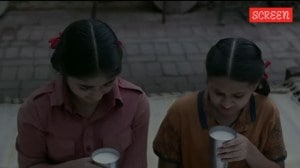Putting government in the past
What can a sprawling, Gothic railway terminus in the plains have in common with a compact, Victorian theatre house in the hills? Mumbai’...

What can a sprawling, Gothic railway terminus in the plains have in common with a compact, Victorian theatre house in the hills?
Mumbai’s Chhatrapati Shivaji Terminus is a grand example of the Gothic Revival style blended with themes from traditional Indian architecture. The building, designed by F.W. Stevens and completed in 1888, is a symbol of Bombay as a meeting point for diverse cultures and suggests, in its scale, the pre-eminence of the city as a major, international mercantile port and industrial hub for nearly 150 years.
On the other hand, the Gaiety, a reproduction of an old British theatre, was at the heart of cultural activity in the sleepy, summer capital of colonial India. Designed by Henry Irwin, it was opened in 1887—a year before VT—and became the home of amateur theatre in the days of the Raj. Located in Shimla, it was a huge source of entertainment for the English elite. Both are emerging as case points to illustrate how a growing desire for heritage conservation can overcome bureaucratic hurdles and prevent old, public buildings still in contemporary use from being misused or ruined by thoughtless alterations.
Humayun’s Tomb or the Gateway of India are not functional, nor have they weathered regular use. Neemrana Palace in Rajasthan, which underwent a facelift and is now a heritage hotel owned by a corporate group, or Goa’s old bungalows, which were reinvented as boutiques, didn’t have to wait till an enlightened bureaucrat came along to appoint a conservationist and have money sanctioned.
But the same isn’t true of the splendid yet understated colonial buildings which serve as government offices, schools, courts, and are at the mercy of a PWD department. In the case of CST, the sandstone terminus modeled on the lines of St Pancras in London, the decades of neglect meant an accumulation of false partitions, mezzanine floors and hideous granite-lined concourses. As for Gaiety, a roof collapse following steady deterioration had rendered its very existence in doubt. Yet, a break has been made. The theatre house under the care of the Himachal art department and the Central Railway station have both benefited from a willingness to bring official maintenance norms in line with the aesthetics of architecture. Despite lack of archival information and the official convention to award tenders to the lowest bidder, consultants on the two projects have managed to balance workmanship against the tight restrictions of the PWD Schedule of Rates.
CT’s administration, too, has learnt from past mistakes, specially after it was named a World Heritage Site, to bring in flexibility in the tendering process, treating each job as an sensitive project aimed at restoration. Both are works in progress but there is much to be satisfied about.





- 01
- 02
- 03
- 04
- 05


























